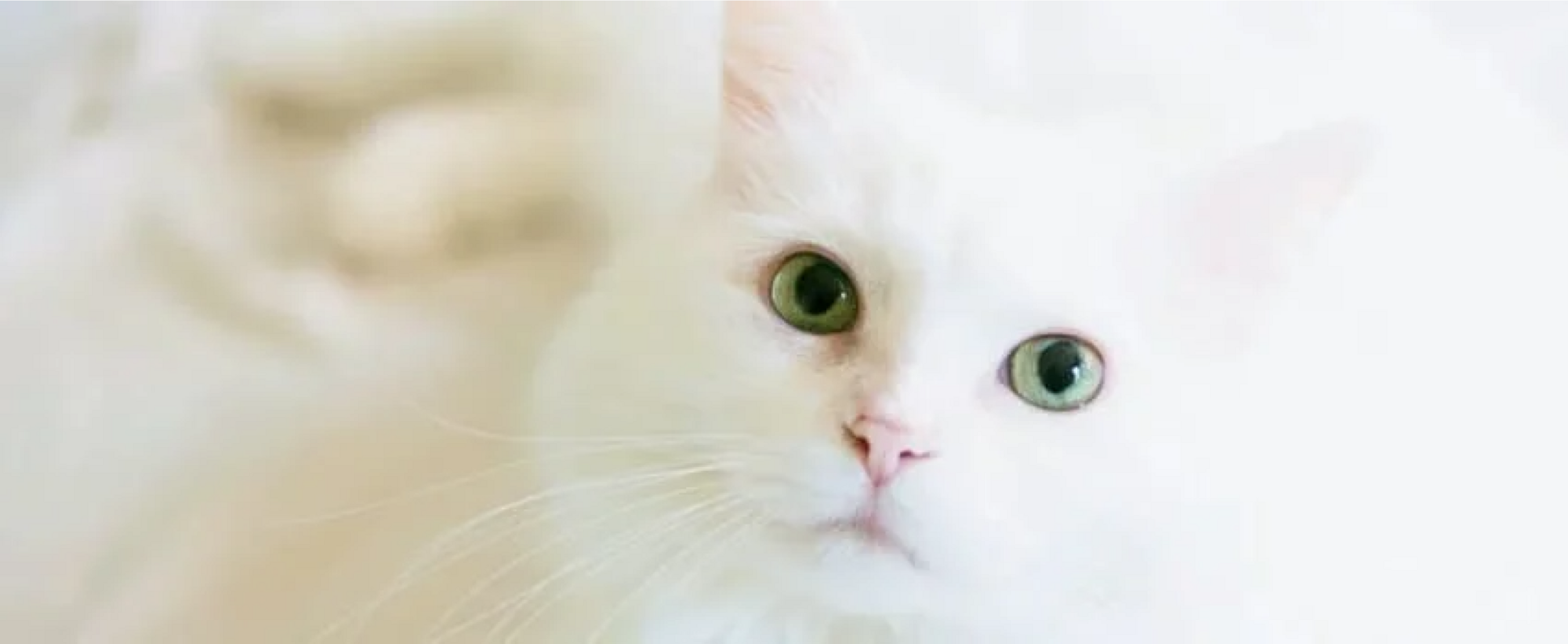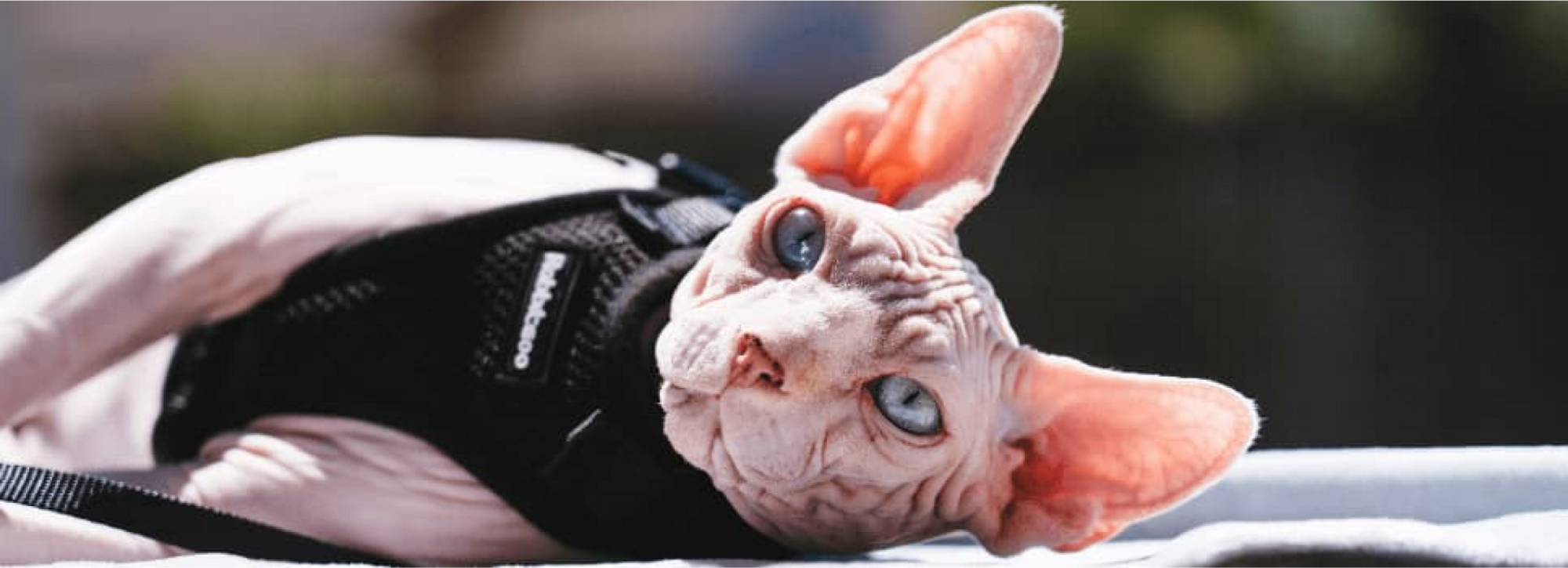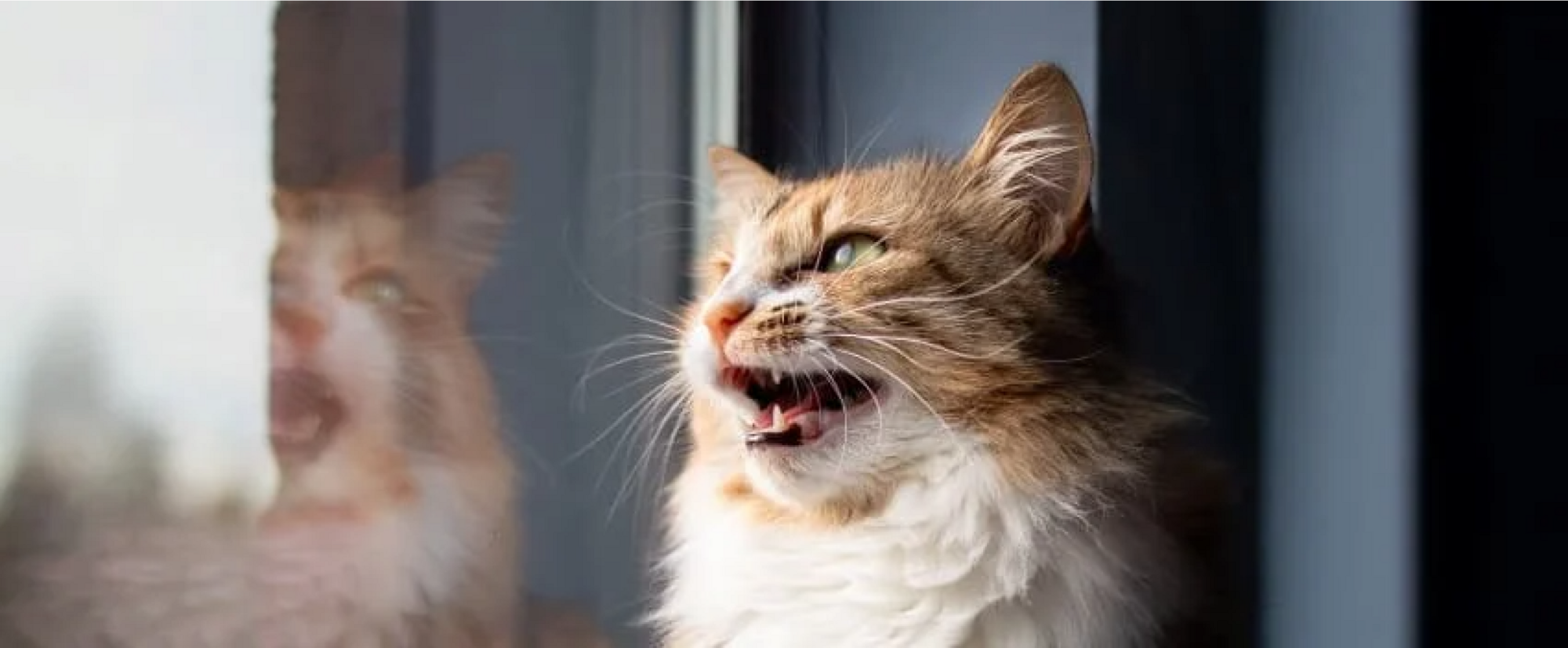Last Updated: 06/05/2025
Can Cats Get Sunburn?
"Does your cat love sunbaking? Read through our Vet guide to learn all about sunburn: facts signs treatment and prevention."
Author: Dr Michelle Story BVSc (Hons) PGCertVS MVS
Reading Time: 22 minutes - medium read
If there's one thing cats love more than sitting in cardboard boxes, itâs sleeping in the sun!
Cats are so well known for their love of sunbaking that we don't think of this activity as being harmful to them. But just like us, our feline friends can get sunburn if they spend too long soaking up those warm rays.
Contents:

Facts About Sunburn in Cats
Whether you're a cat, dog, horse or human, exposure of the skin to ultraviolet (UV) radiation from the sun causes damage to skin cells, which leads to inflammation. If too much sun exposure occurs at one time, the inflammation will eventually increase to the point that it can be seen and felt â that is, sunburn develops.
But cats are covered in fur â how can they get sunburn?
While the layer of cat hair that covers your clothes, furniture and food might suggest that your cat has endless amounts of fur, certain areas of a cat's skin have little to no hair coverage. These areas can include the nose, eyelids, ears, lips, belly, inner thighs, and the skin between the outer corner of the eye and the base of the ear. While all cats have some amount of skin with reduced hair coverage, the extent varies between cats due to the wide variation in coat thickness.
Of course, some breeds of cats are born with little hair (for example, the Sphynx ). Other cats may develop bald patches or a thinning coat due to health issues or overgrooming. Areas that have been clipped may also be more susceptible to the sun, depending on how short the hair is cut.
My cat has dark skin â can they still get sunburn?
Melanin helps to protect the skin from UV radiation, so cats with light skin are particularly at risk of sunburn and will burn more quickly than cats with darker skin. However, melanin doesn't provide complete protection, so even cats with pigmented skin can get sunburn if they are exposed to the sun for long enough.
My cat never goes outside â do I need to worry about sunburn?
While windows do block a lot of UV radiation, some does get through, so even indoor cats can get burnt if they spend enough time in the sun. And we all know how much indoor cats love snoozing by a window!
Which cats are most at risk of sunburn?
The main factors that determine a cat's risk of sunburn are:

The extent and thickness of their hair coverage (less hair = more exposed skin = more risk of sunburn)

The amount of pigment in their skin (lighter skin = less melanin = more risk of sunburn)

The amount of UV radiation they are exposed to (longer exposure and exposure to higher UV levels = more risk)
Why should I care about sunburn in cats?
Sunburn is painful and can lead to skin infections and scarring. Plus, sunburns increase the risk of squamous cell carcinoma (SCC), a type of skin cancer. This means that preventing sunburn is important for ensuring your cat's short-term and long-term health and wellbeing.

Symptoms of Sunburn in Cats
Most of us have experienced sunburn at one time or another, and the symptoms in cats are similar. The affected skin is red, hot, dry/flaky, and painful. In more severe cases, there may be swelling, blisters, ulcers, and crusting.
Treatment of Sunburn in Cats
If your cat does get sunburnt, itâs important to get them out of the sun immediately. You should also take them to a vet as soon as possible because they will need pain relief (and antibiotics if the burn is severe).
You can put a clean cloth soaked in cool water on the burn until you can get your cat to the vet clinic (change the cloth as needed to keep the skin cool and moist). It's not recommended to apply any other topical treatments or to give any medications without checking with a vet first.

Prevention of Sunburn in Cats
The best way to prevent sunburn is going to depend on your cat's lifestyle and risk of sunburn. A combination of methods may be required, particularly for high-risk cats. If you are unsure about your cat's risk or what prevention options are the most suitable for them, please speak to your regular vet or a member of the Pet Circle Vet Squad.
Sunscreen
Many sunscreens are highly toxic to cats if ingested, so it's important to only use ones that say they are cat-safe, or to ask your vet what they recommend. Remember that you will need to reapply the sunscreen regularly.
You can encourage your cat to tolerate the application of sunscreen by feeding them their favourite treats - paste treats often work well.
Protective clothing
This can be more practical than sunscreen when large areas of the body need to be covered. However, clothing isn't recommended for cats that freely roam outside due to the risk of them getting caught on something, so this option is only suitable for indoor cats, cats that are confined to an enclosure, or cats on lead walks. Also, clothing may not be suitable during hot weather due to the risk of overheating.
Avoidance
Keeping your cat out of the sun (including the sun coming through windows) during peak UV radiation levels will reduce the risk of sunburn. Peak UV radiation levels generally occur between 11am and 4pm but weather apps and websites can provide specific information for your area.
Window tint
If your cat spends long hours sunning themselves by windows and you don't want to deprive them of this, you could consider getting UV protective window tinting.
Shade
If your cat has an outdoor enclosure, having solid roofing and walls in spots that are prone to getting large amounts of sun and/or using UV blocking shade cloth can help reduce the risk of sunburn.
In conclusion, cats can indeed get sunburn, especially on areas with less hair coverage. Sunburn can be painful and increase the risk of skin cancer, making prevention crucial. Options such as cat-safe sunscreen, protective clothing, and shade can help reduce the risk. If a cat does get sunburnt, immediate veterinary attention is necessary for proper treatment. By being aware of the risks and taking preventive measures, we can help keep our feline friends safe and healthy in the sun.
Further Reading
Want to know more? Take a look at our other cat health articles such as:
Cats with Sensitive Itchy Skin
How to Manage Dandruff in Cats
Want to know more? Check out our Discover Page for more tips from our expert vets on keeping your pets happy and healthy.